Five things to buy at the Nishiki Market in Kyoto
S and I are foodies. We cook a lot at home and are always relishing the opportunity to make an authentic Japanese meal for ourselves. Therefore, when we walked past the Nishiki Market in Kyoto, we were very much drawn to the multitude of stalls despite the incessant rain. We decided to come back again the next day, when the weather was better. To our dismay, it was 9.30am in the morning and about half the shops had not open yet. But we did make some good buys, and this came in the form of life’s basic foods – eggs. Here’s our take on the five things to buy at the Nishiki Market in Kyoto.
About the Nishiki Market in Kyoto
According to Japan-guide.com, Nishiki Market dates back to centuries ago, first opening in 1310. Many stores are run by the same families across generations. It started out as a fish wholesale district. More variety of shops shifted in later, and it became a retail market instead. Today, it continues to be a market for both locals and tourists.
Five things to buy at the Nishiki Market in Kyoto
1. Eggs (Miki Keiran – 三木雞卵)

I love Japanese eggs – tamago, as some skill is required to achieve the layered texture. They are turned, layer by layer, until the entire egg form is made up of several thin, almost unnoticeable layers. We came across Mikki Keiran while walking through the Nikshiki Market in Kyoto that morning. It was slightly before 10am, and the shop was bustling. Young apprentices stooped over rectangular tamago pans, making the first batch of tamagos for the day. I believe they do some wholesale trade to restaurants as well, as it seemed that only a small portion of the eggs were for retail.
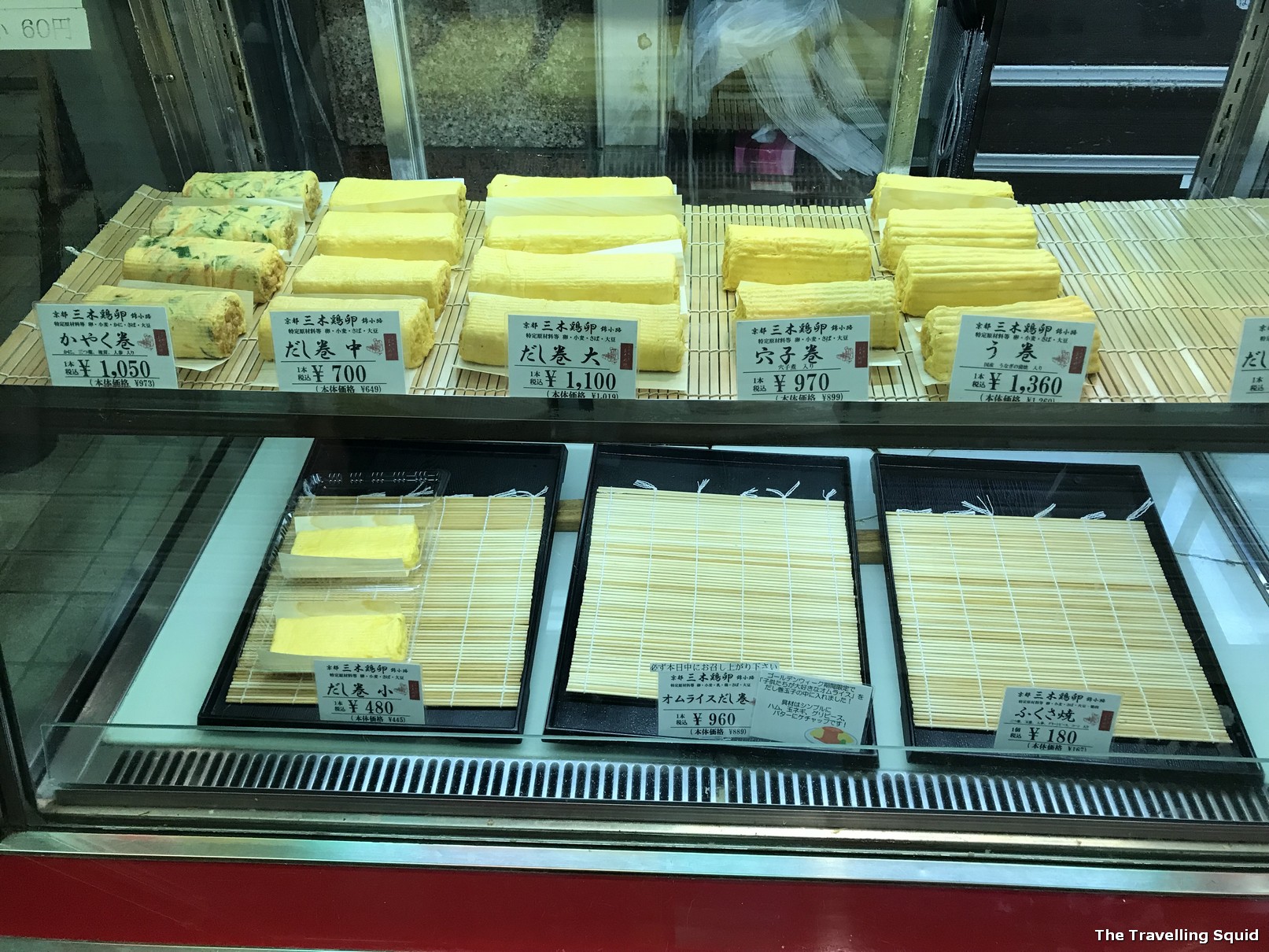
Now I must caveat that the tamago is not cheap. We shelled out about 1,100 / SGD13.50 / USD10 for what seems to be the “dashimaki tamago“. (This involves the adding of dashi (a flavourful, kelp and bonito flakes seasoned broth) to the tamago). According to Kyoto.jp, dashimaki tamago is difficult to cook because the quantities have to be precise in order to maintain the consistency and structure of the egg. Apart from dashimaki tamago, there were eggs flavoured with bonito, shitake mushrooms and carrots also on sale.

The dashimaki tamago was steaming hot when we first received it, and steam emerged once our chopsticks hit the centre of the egg. The insides were so moist and fluffy. The warm semi-liquid egg just melted right into our mouths, leaving behind the fragrance of freshly cooked eggs. It was an unforgettable moment, and a worthy investment. It was such a delight to have that I felt that I was almost competing with S for extra helpings. Thinking there might be better food awaiting us at subsequent stores, I restrained the urge to purchase another tamago. Little did I know how wrong I was – no other food item could beat Miki Keiran eggs at the Nishiki Market in Kyoto.

Soon after we were done with the eggs, a long queue had formed around the shop. I took one last look at the shop before leaving. The apprentices continued frying the eggs like clockwork. It was an experience to remember.
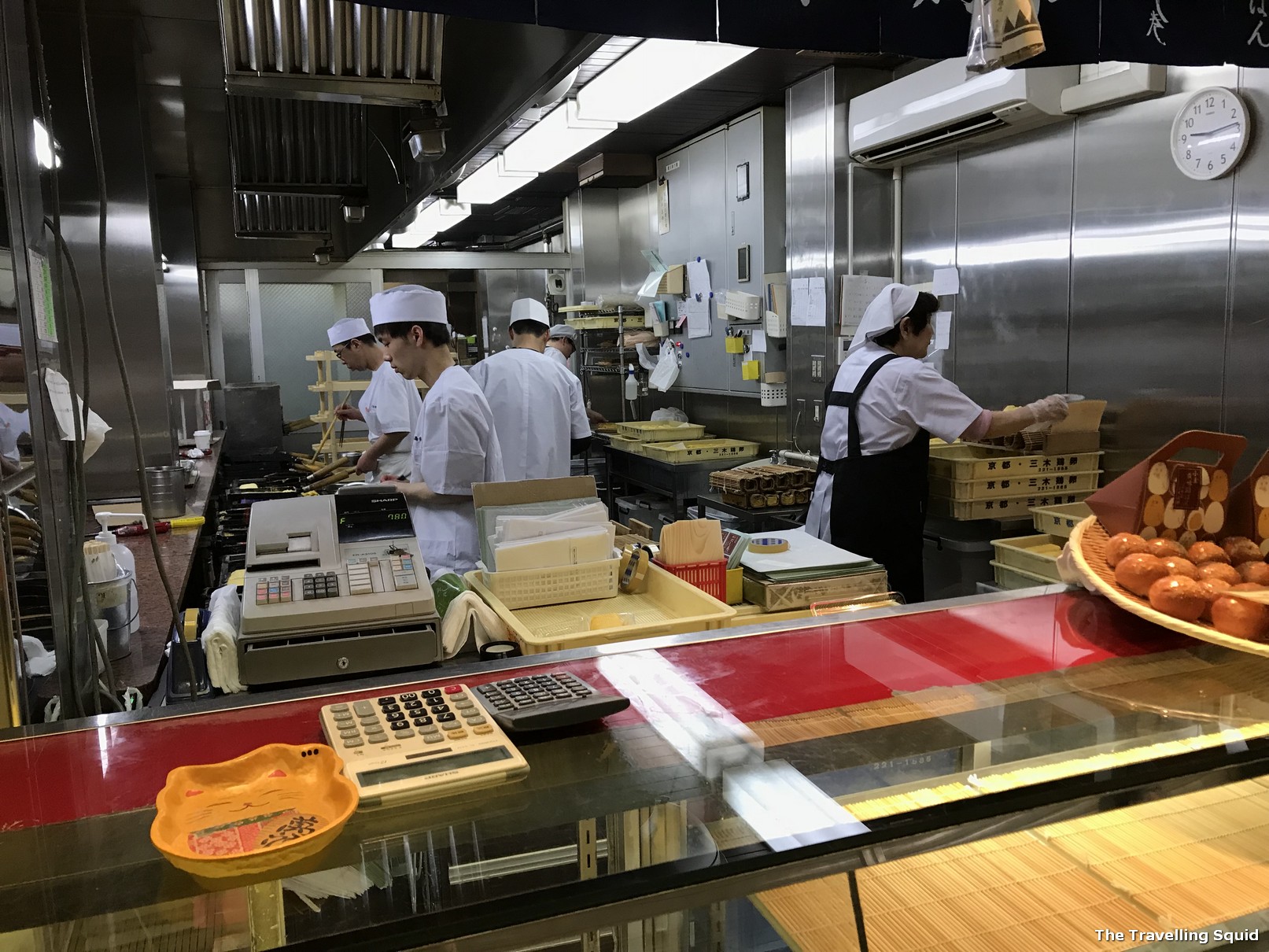

[Miki Keiran at Nishiki Market]
- Address: 182 Higashi Uoya-cho, Nishikikoji-dori Tominokoji-nishi-iru, Nakagyo-ku, Kyoto
- Phone: +81 075-221-1585
- Website: http://mikikeiran.com/ (Google Translate for English please)
- Opening hours: 9am – 6pm daily
- Email: info@mikikeiran.com
2. Knives (Aritsugu)
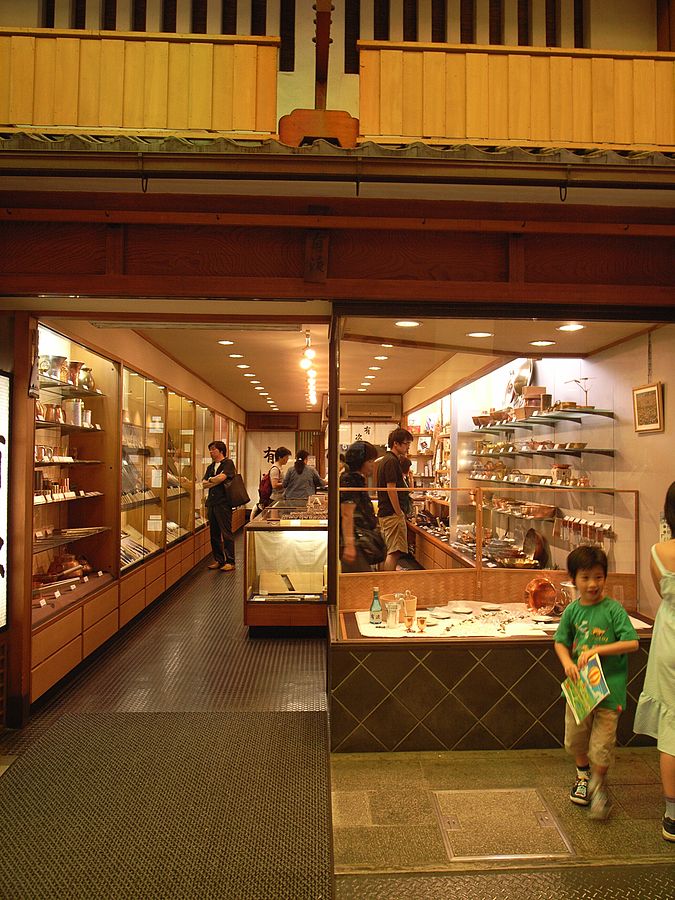
In the late 19th century Meiji period, there was strong growth in demand for kitchen knives and cooking utensils in Japan because of stable government and improved living conditions. Aritsugu then used its experience in blade production to focus on this emerging market. The current proprietor of Aritsugu is Shinichiro Terakubo, the 18th generation of the family who took over from his father in 1956 at 17 years of age.
I should alert you that the knives are not cheap. They are made via traditional technique, and prices start from 10,000/ SGD123/ USD90 for a small cutting knife. According to March-JP.com, it goes up to USD190 for a Chef Knife and USD420 for a professional carbon steel knife. The quality of the knives is said to transcend generations, hence the hefty price tag.
[Aritsugu at Nishiki Market]
- Address: 219 Kajiya-cho, Nishikikoji-dori, Gokomachi nishi iru, Nakagyo-ku/ 中京区錦小路通御幸町西入ル鍛冶屋町219
- Opening hours: 9am – 5.30pm
- Prices of Knife: From ¥10,000/ USD90 for a small cutting knife, to USD190 for a chef’s knife.
- Website: http://www.kyoto-nishiki.or.jp/stores/aritsugu/
3. Hoji-cha
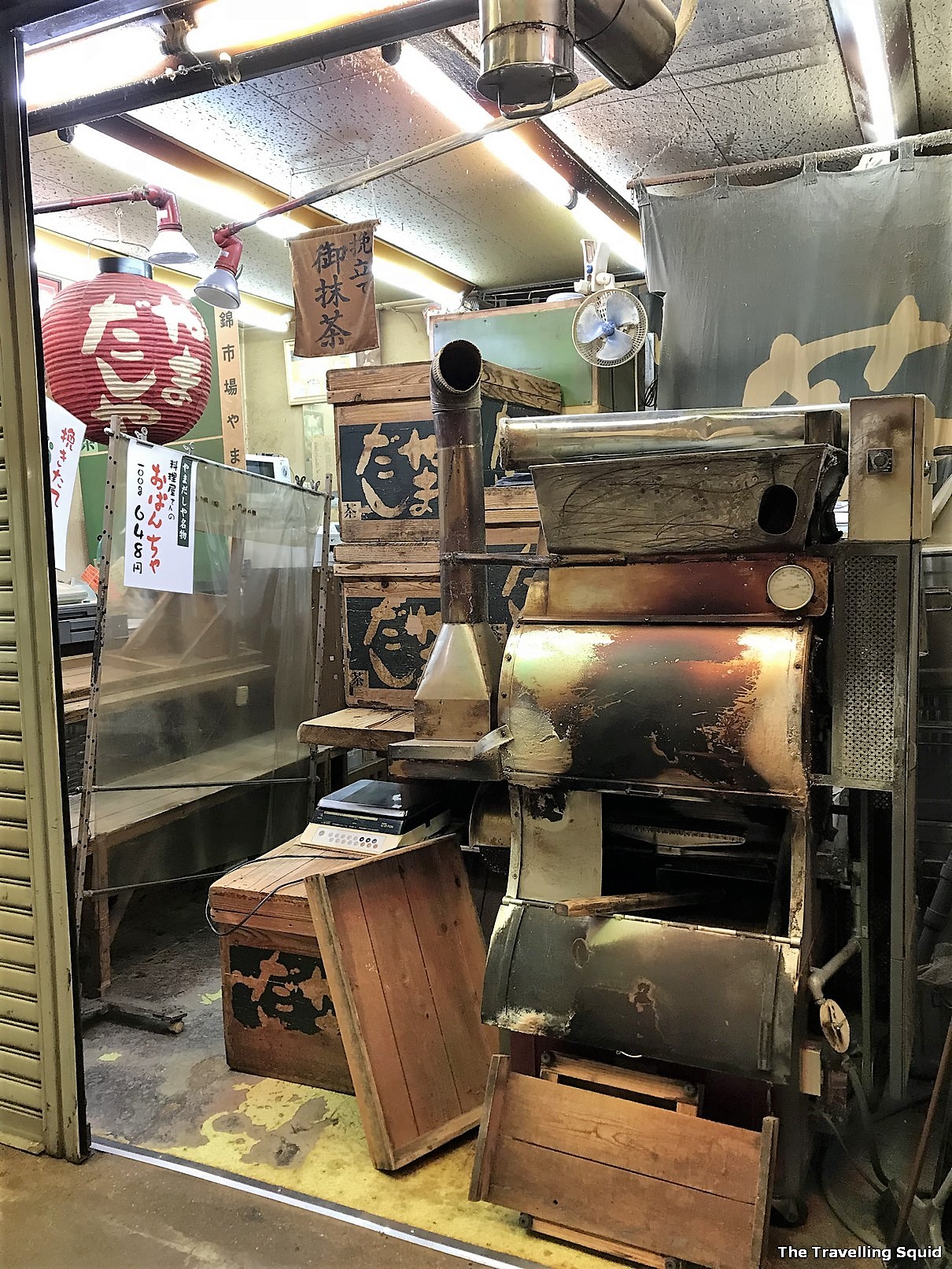
We were walking past some tea shops that very morning, and the smell of hoji-cha filled the air. Although the tea shop wasn’t open, it added a nice dimension to our visit of the Nishiki Market. As roasting is done in-house, I can only imagine the tea is pretty good. I did a quick check online and that tea shop could be Yamadashiya (やまだしや). There are two Japanese reviews which rated it as 3.5/5 on Tripadvisor. The reviews say it’s a nostalgic place and the tea was good.
[Yamadashiya (やまだしや) at Nishiki Market]
- Address: Nishikikojidori Fusumayacho Nishi Iru, Nakagyo-ku , Kyoto 604-0000, Kyoto Prefecture/ 京都府 京都市中京区 麩屋町通錦小路上る梅屋町501 錦市場内 [It is near Miki Keiran]
- Phone: +81 75-223-5272
- Website: http://yamadasi.free.makeshop.jp/
- Prices: Hojicha goes for ¥630 / SGD7.80 / USD5.70 for 100g/ Genmaicha goes for ¥525 / SGD6.50 / USD4.75 for 100g. (It’s a lot cheaper than the more renowned brands like Fukujuen.)
4. Rice

According to The Points Guy, you can get rice from several prefectures in Japan at Chuo Beikoku. It is definitely one of the best things to buy at the Nishiki Market in Kyoto, provided you have ample luggage space. At Chuo Beikoku, the rice can husked at the point of purchase, and can be vacuumed sealed for travel. Based on the prices we had seen, the rice was about ¥520 / SGD6.40 / USD4.70 per kg. Tripadvisor gives it a 4/5 rating and most reviews are in Japanese (probably legit!). Apart from the sale of rice, there are ready-to-eat rice balls on sale.
[Chuo Beikoku (中央米穀) at Nishiki Market]
- Address: Nakauoyacho, Nishikikoji Yanaginobanba-dori Kado, Nakagyo-ku, Kyoto 604-8125, Kyoto Prefecture
- Tel: +81 75-221-2026
- Website: http://www.okomenochuoo.jp/
5. Pickles

If you’re thinking of buying some Japanese pickles home, Uchida Tsukemono at the Nishiki Market in Kyoto has a wide selection. It has samples which you can try, and some vacuum -packed ones which you can bring home too. Tripadvisor gives it a 4/5 rating.
[Uchida Tsukemono (打田漬物 錦小路店) at Nishiki Market]
- Address: Nishikikoji Yanaginobanba-dori Nishi-iru, Nakagyo-ku, Kyoto 604-8125, Kyoto Prefecture
- Tel: +81 75-221-5609
- Website: http://www.kyoto-uchida.ne.jp/shop/
- Opening hours: 10am – 6pm daily
The Travelling Squid’s Take
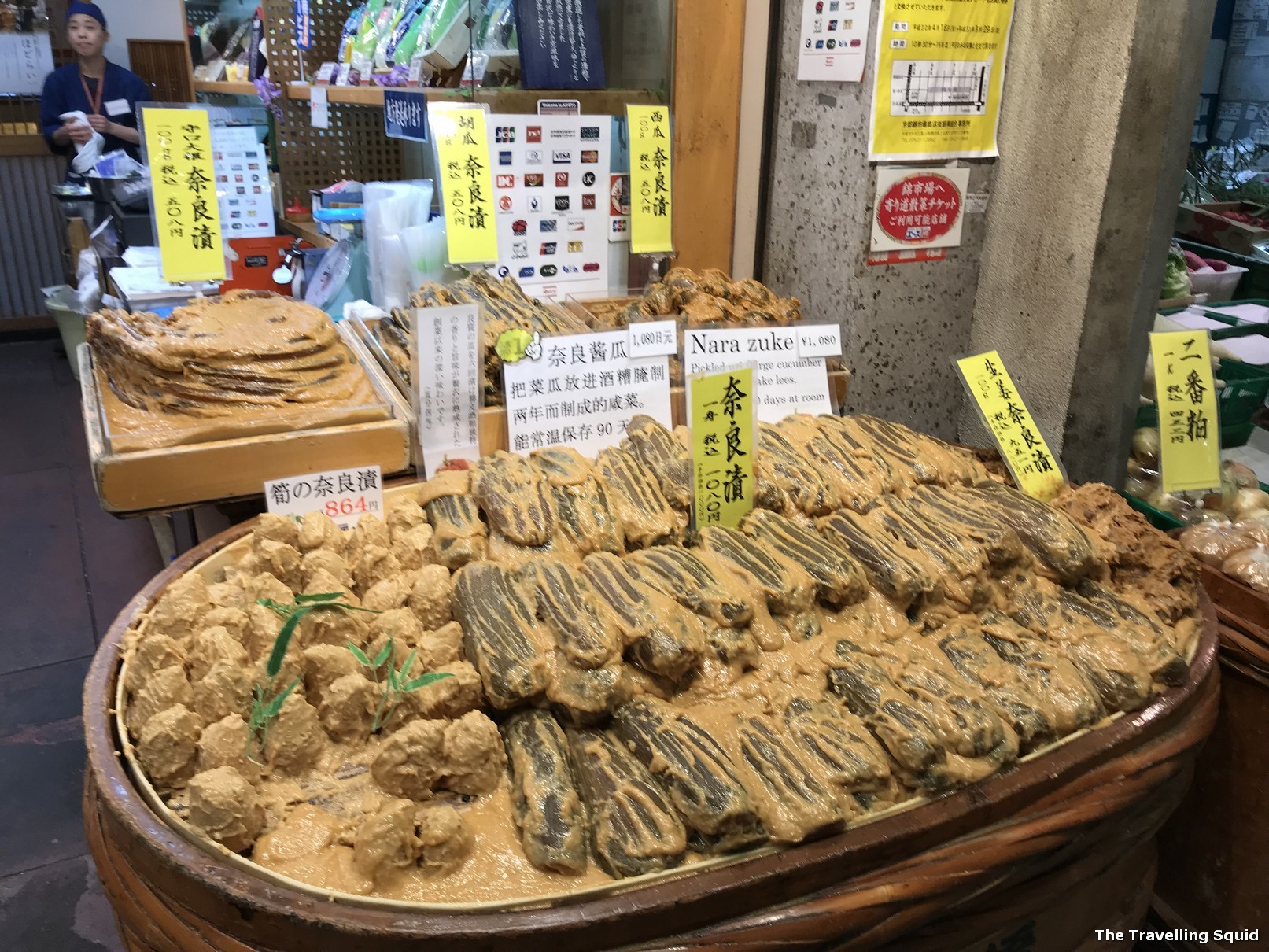
The Nishiki Market in Kyoto strikes me an authentic market which is not overly touristy. As we visited various stalls, it was apparent that the offerings were for local customers as well – food items like radishes cover in miso were probably not something most foreigners would be used to. The tea leaves were also of a lesser known brand.
Of the five things to buy at the Nishiki Market in Kyoto, the tamago from Miki Keiran is a must-try. If not for the fact that we were travelling to several other areas other than Kyoto, we would have bought the rice as well. For those who enjoy Japanese food, it’s a market worth visiting.
***
Things to buy at the Nishiki Market in Kyoto
- Address: Japan, 〒604-8054 Kyoto Prefecture, Kyoto, Nakagyo Ward, 富小路通四条上る西大文字町609番地
- Phone: +81 75-211-3882
- Website: http://www.kyoto-nishiki.or.jp/history.html (You will have to Google Translate it to English)

Leave a Reply